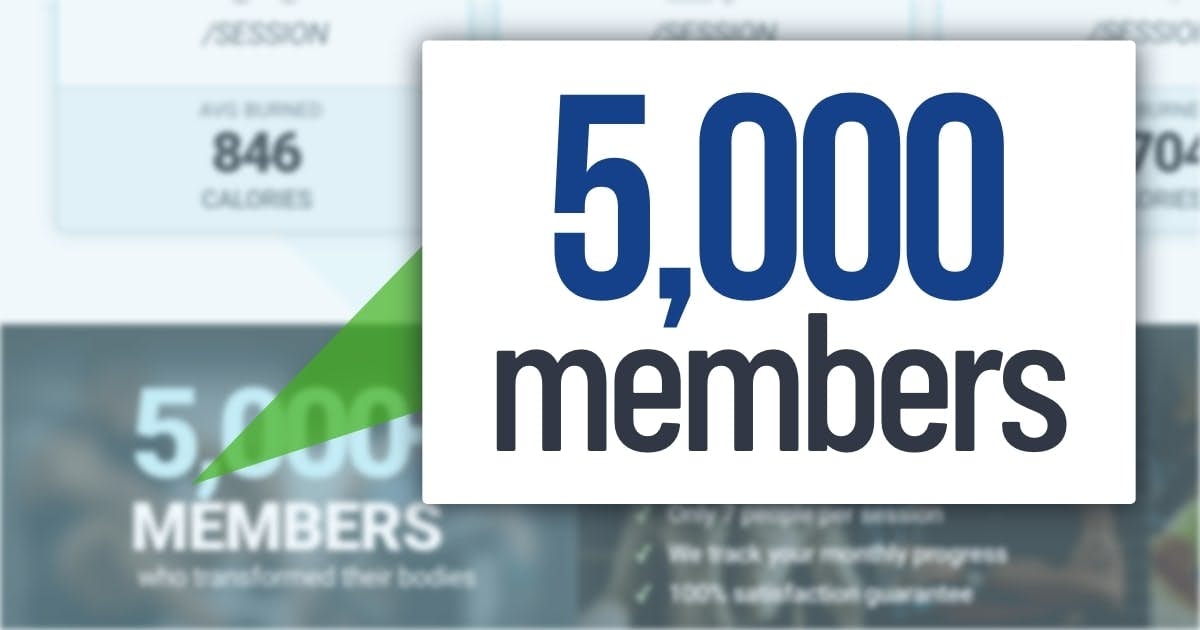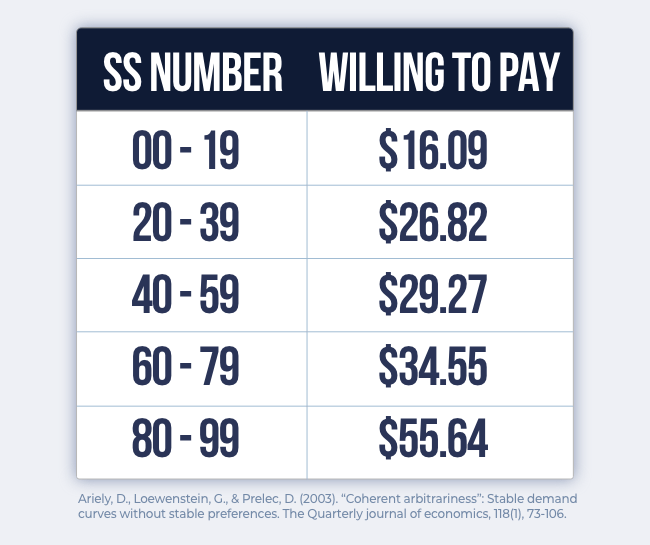Insert Large Numbers Near Prices
Seeing a large number can make nearby prices feel smaller.

Overview
Researchers sold CDs on a boardwalk in West Palm Beach.
Every 30 minutes, a nearby vendor switched the price of a sweatshirt between $10 or $80.
Even though it was a different vendor, the $80 sweatshirt boosted sales of CDs because they seemed cheaper (Nunes & Boatwright, 2004).
Anchoring works with any number. In another study, people reflected on the last two digits of their social security number. If these digits were high, they were willing to pay higher prices for products.

Therefore, show high numbers near your price:
- Join 5,487 happy customers
- Invoice #8986
- We donated $100,000 to charity
Same with quantities:
- Bad: $29 for 70 items
- Good: 70 items for $29
While reading the second line, the large quantity (e.g., 70) becomes a numerical anchor that makes the subsequent price seem cheaper (Bagchi & Davis, 2012).
- Adaval, R., & Monroe, K. B. (2002). Automatic construction and use of contextual information for product and price evaluations. Journal of Consumer Research, 28(4), 572- 588.
- Ariely, D., Loewenstein, G., & Prelec, D. (2003). “Coherent arbitrariness”: Stable demand curves without stable preferences. The Quarterly journal of economics, 118(1), 73-106.
- Nunes, J. C., & Boatwright, P. (2004). Incidental prices and their effect on willingness to pay. Journal of Marketing Research, 41(4), 457-466.
- Bagchi, R., & Davis, D. F. (2012). 29for70itemsor70itemsfor 29? How presentation order affects package perceptions. Journal of Consumer Research, 39(1), 62-73.
